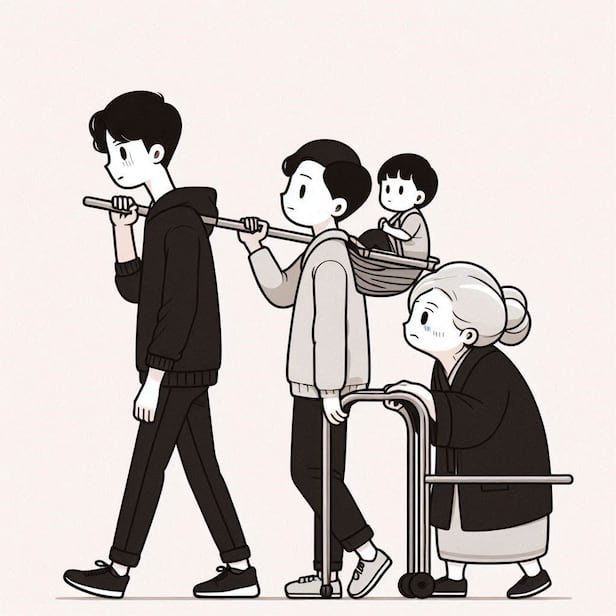
South Korea is projected to face a sharp demographic shift in the coming decades, with a declining birth rate and aging population leading to increased social burdens on the working-age population.
In six years, it is projected that two working-age adults in South Korea will need to support one elderly person or child. By 2058, just 34 years from now, the forecast suggests that one working-age adult will have to support one dependent, either an elderly person or a child. This projection stems from the country’s rapidly declining birth rate and aging population, which are expected to lead to a surge in social costs.
According to a report published by Statistics Korea on Sept. 26, S. Korea’s population is expected to peak at 51.75 million in 2024 before gradually declining to 51.31 million by 2030. By 2072, the population is projected to drop significantly to 36.22 million, a decrease of 15.5 million from current levels.
The report predicts that South Korea’s population growth rate will shrink by an annual average of 0.16% over the next decade, with the decline accelerating to 1.31% by 2072. By then, births are expected to total just 160,000 while deaths could reach 690,000—meaning four deaths for every birth, signaling a severe population collapse.
In 2022, the median age in South Korea stood at 44.9 years. By 2072, it is expected to rise sharply to 63.4 years, indicating that half of the population will be over 63 years old.
The rapid shift in demographic structure will place increasing burdens on the working-age population (ages 15 to 64). As of 2022, the total dependency ratio—representing the number of children and elderly people that 100 working-age individuals must support—was 40.6, meaning 10 working-age adults had to support 4 dependents. By 2030, this number is projected to surpass 50, meaning two working-age individuals will need to support one dependent.


